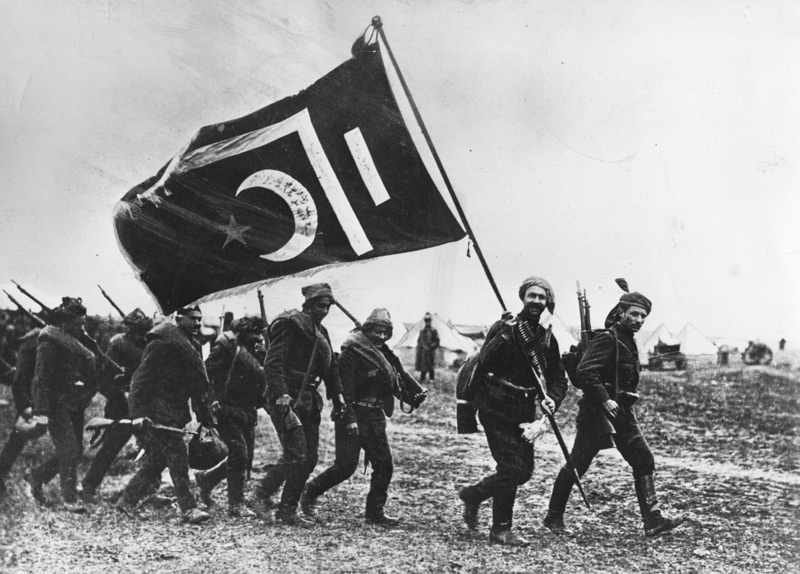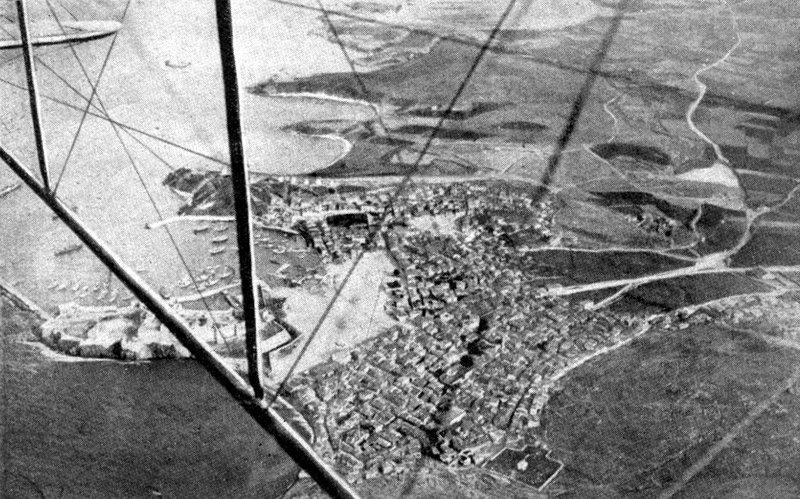
28 July marks the hundredth anniversary of the start of the First World War as Austria-Hungary declared war on Serbia exactly one month after the assassinations in Sarajevo of Archduke Franz Ferdinand of Austria-Hungary and his wife, Sophie, by Serbian nationalist Gavrilo Princip. The fallout from the killings ricocheted through the web of European alliances and culminated in the outbreak of the First World War between 28 July and 4 August 1914. With the passing of the last surviving participants, the First World War has moved from the fringes of personal experience into the history books. Yet in the Middle East, overlain by subsequent conflicts and decades of bitter contestation, the aftermath of decisions made during the war continue to reverberate across the region.
On the centenary of the start of the First World War, the legacies of the period are at once everywhere and nowhere. Two of the states that emerged from the legacy of the first large-scale, Western military intervention in the region lie in ruins. Iraq has been shattered by the baleful results of a renewed Western assault nearly a century after a British commander assured Baghdadis in March 1917 that ‘our armies do not come into your cities and lands as conquerors, but as liberators’. Neighbouring Syria has been torn apart by civil strife as part of the post-2011 Arab uprisings that have shaken the post-colonial system of states and regimes to their core. Commentators and analysts alike have observed variously that the ‘Arab Spring’ represents a second ‘Arab revolt’ (after the first that began in 1916) or that it heralds the final unravelling of the Sykes-Picot agreement that divided the region into spheres of British, French, and Russian influence at the expense of local Arab aspirations.
In each case, the terminology hearkens back to developments during the First World War as it was this conflict that, more than anything else, determined the nature of the state-system that later emerged. Other, more recent, forces such as Arab nationalism, political Islam, revolutions, civil wars, and, not least, decades of superpower rivalry and Arab-Israeli conflict have all transformed the region and its place in international politics. Nevertheless, the legacy of developments and decisions taken during and after the First World War remains a source of bitterness, contestation, and conflicting interpretation to this day. This reflects the fact that the war years represented a transition of the region from a crucible of competing empires to the emergence of the modern state system with all that implied for the realisation—and crushing—of national aspiration, the recasting of loyalties, and the birth of grievances that have come to occupy totemic positions in regional narratives.
The First World War was pivotal to the creation of the recognisably modern state-system in the Middle East. It hastened the demise of the Ottoman Empire and paved the way for the emergence of a state-system (albeit under mandatory rule) that remains largely in place today. The entire political landscape of the region was reshaped as the legacy of the war sapped the ability of imperial ‘outsiders’ to dominate and influence events as nationalist groups succeeded in mobilising mass movements around distinctly national identities. Yet, this occurred just as the actual and potential value of Middle Eastern oil became a permanent feature of a new set of western geo-strategic consideration.
As a result, the post-war Middle East that emerged between 1919 and 1922 was unrecognisable from that of 1914. New political movements and ideologies were intermixed with debates around the identities and development of nation-states. The focal point of decision-making shifted from the fading grandeur of empire to the activity of national governments. A new political class tested the boundaries of the post-war settlement while British and French colonial administrators struggled to adapt to new realities of diminished control. Turkey also changed beyond recognition as Ataturk embarked upon a wide-ranging programme of socio-political modernisation that involved reorienting the new republic toward Europe and turning its back on the Middle East. In the Arabian Peninsula, the competition between the Saudi and Hashemite dynasties was resolved in favour of Abdul Aziz Al-Saud with lasting consequences for the state that took his name in 1932.
With Syria and Iraq in the throes of renewed political turmoil and the Middle East having experienced decades of regional and international crises, many attributable to the decisions taken during and after the First World War, the complicated legacies of the war have immediacy and relevance. A parallel may be drawn with the divided Europe up until 1989, where the ramifications of the Second World War remained highly visible across multiple generations. In this context, it is harder to establish historical distance from events whose legacy continues to resonate throughout the region.
So much has occurred in the intervening century that, while the connection to the First World War may not be immediately made, issues such as the Sykes-Picot Agreement and the Balfour Declaration are widely spoken about as if they refer to contemporary controversies. The US Ambassador to Syria between 1988 and 1991, Edward Djerejian, recalled how Syrian President Hafiz al-Assad ‘subjected me to countless narratives about how the Sykes-Picot Agreement was the origin of all the ills of the contemporary Middle East.’ This explains also media references to how the current conflict in Syria and Iraq is contributing to ‘unmaking’ the Sykes-Picot Agreement.

For many in Europe, the forthcoming centenary will be an opportunity to pause and reflect on the enormity of the human suffering involved. Those with ancestors who fought and died in the campaigns retain emotional and physical links with the past through letters, diaries, and personal effects. At Gallipoli, the shallow remains of wartime trench systems are still visible to people who leave the road and walks a few metres into the pine forests. British war cemeteries dot the landscape of the Middle East, some immaculately tended and others in various states of disrepair. Yet for people and societies in the Middle East itself, the significance is very different as the campaigns had monumental consequences for the entire region. As it now stands on the cusp of another period of rapid change, it is instructive to look back at the processes that exerted such an influence on the contemporary development of states and societies in the region.
Kristian Coates Ulrichsen is a research fellow at the James A. Baker III Institute for Public Policy at Rice University and an associate fellow on the Middle East North Africa Programme at Chatham House. He is the author of Insecure Gulf: The End of Certainty and the Transition to the Post-Oil Era and The First World War in the Middle East.